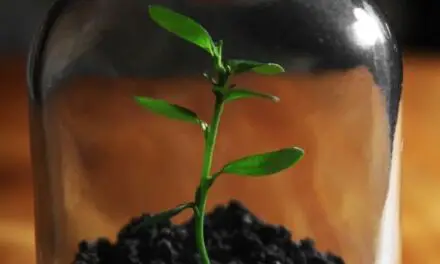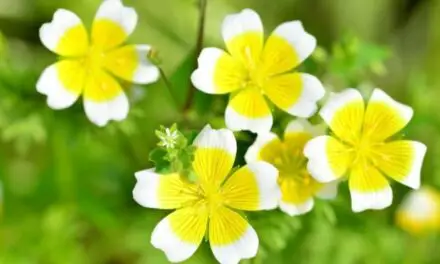Roses are one of the most popular and symbolic garden plants you will find.
They are easy to look after and come with scented flowers in a wide range of colors.
They also last a long time, once they’ve been cared for long enough to become established.
But one of the first signs of stress you will see with a rose is leaf loss and that leads some people to ask whether or not their rosebush could survive without any leaves at all.
Table of Contents
Can A Rose Bush Survive Without Leaves?

A rose bush cannot survive without leaves. If all the leaves are gone and the rose can no longer produce new leaves it will die.
A rose bush must have leaves so that it can carry out photosynthesis and produce the food it needs to survive, grow and reproduce.
Without leaves and the ability to photosynthesize, the bush may survive for a short while and grow a little bit more by using its stored energy reserves, but it will not last long and eventually die.
What Will Happen If My Rose Bush Loses All Of Its Leaves?
If your rose bush loses all its leaves, the first thing it will try to do is grow new ones.
Plants usually direct their energy into growing what is most critical for their immediate survival.
Because leaves are needed for your rose bush to survive, it will put most of its stored energy into producing new leaves so that it can produce more food and energy through photosynthesis.
Plants often loose all their leaves during hibernation or times of severe stress, such as transplant shock.
When leaves are lost temporarily, plants usually have enough stored energy to survive for long enough to produce new leaves.
And plants in hibernation use practically no energy at all.
But when the time comes for the plant to come back to life, grow and reproduce; if it requires leaves for photosynthesis and cannot grow those leaves, it will die.
If for any reason your rose bush can never again produce leaves it will certainly die.
Related Article: Why Is My Sensitive Plant Turning Yellow? (And How To Reverse It)
Why Is My Rose Bush Losing Leaves?
A rose bush most commonly loses leaves because of underwatering, overwatering, fungal infections, excessive heat, or transplant shock.
A Lack Of Water
When leaves begin to fall, it’s often a sign that the rose bush is suffering from a distinct lack of water.
A common cause of leaf loss is lack of hydration, be it because of improper watering or just unsuitable soil.
A common sign is when the leaves begin turning dry and wrinkled.
However, the reverse can also be true.
Overwatering
A plant can drown if its roots are waterlogged.
When leaves turn a shade of yellow, that’s a sign that your rose has been overwatered, and needs to dry out.
Well, if you are taking good care of the rose bush, then it is likely that there’s another reason for the falling leaves.
Fungal Infections
Fungi, such as the black spot fungus, may be the reason for the falling leaves.
Black spot fungi spread very quickly, but they can be prevented by spraying the bush with a fungicide as soon as there is any sign of disease.
Excess Heat
Heat may also cause the rose bush to lose leaves in an attempt to cool itself down.
When that happens, try to provide more shade for the rose bush, and try to keep it hydrated.
Transplant Shock
If you have recently bought or moved your rose, it may be going through transplant shock.
If you bought it from a nursery where it had been kept in a greenhouse, the temperature and humidity change could be enough to cause it to drop most of its leaves.
If this is the case, you’ll have to wait patiently for a while to see if your rose bush makes recovery by itself.
How To Stop Your Rose Bush From Losing Leaves
If you want to grow a healthy rose bush that won’t suddenly drop all of its leaves, then you need to ensure that it’s growing in the type of environment that it likes.
Plant It In The Right Type Of Soil
Roses are deep-rooted, hungry plants and do best in rich, well-drained loamy soil that will hold onto a tiny bit of moisture.
Make sure the soil is not too dense or clayey so that the roots can breathe and thrive.
Water It Properly
Once the deep roots of roses become established, they usually don’t need much additional watering.
But this can take time and roses should be thoroughly watered during the first few years after having been planted.
Water the soil thoroughly before and after planting and then keep an eye under weather for at least the first couple of years.
If there’s any drought and the soil becomes too dry, you’ll have to give your roses good watering but try not to wet the leaves.
Aim to keep their soil slightly moist, not too dry, and never soggy.
If in a pot, water when the soil feels dry to the touch.
Lots Of Sun
Rose bushes usually need around 6 to 8 hours of full sun per day to flower and generally do well.
When given much less than 6 hours of sunlight per day, roses tend to flower less and end up becoming tall and leggy as they stretch for the light.
Fertilize Regularly
As mentioned, roses are quite hungry and will respond well to feeding.
It’s easiest to use a rose-specific fertilizer and then mulch over with some rotted organic material, leaving a little space around the stem.
Fertilize roses in pots with a general-purpose liquid feed from around the middle of spring to the end of summer.
And after you see blooms, switch over to a high-potassium liquid fertilizer.
Pruning And Deadheading
Roses come in many types and shapes, and no single pruning method will suit them all.
There are roses that bloom one flower at the top of their stem (hybrid tea) and roses that bloom multiple flowers at the top of their stem (floribunda).
The main difference between these two types of roses is that you can prune the hybrid tea more.
If possible, prune in winter, cutting any dead or dying wood back to just above an outward-facing bud.
Try to remove inward-facing buds or branches that are crossing or growing towards the center of the bush.
Look for outward-facing buds and cut away branches just above them.
When you’re finished, you should have a neat and healthy-looking rose bush with all dead, unproductive, and inward-growing branches removed.
This will lead to a much healthier-looking rose bush in time, but if you have just done some heavy pruning, don’t expect to see blooms for some time because the plant will be putting all of its energy into regrowing branches.
Final Thoughts.
Roses are resilient and can be found growing in many different spots within the garden.
They can be grown as ground cover, in containers, along borders or even creeping up walls.
But when they come under stress they often drop their leaves.
Thankfully, this is usually temporary and as long as you care for your rosebush those leaves will grow back.




